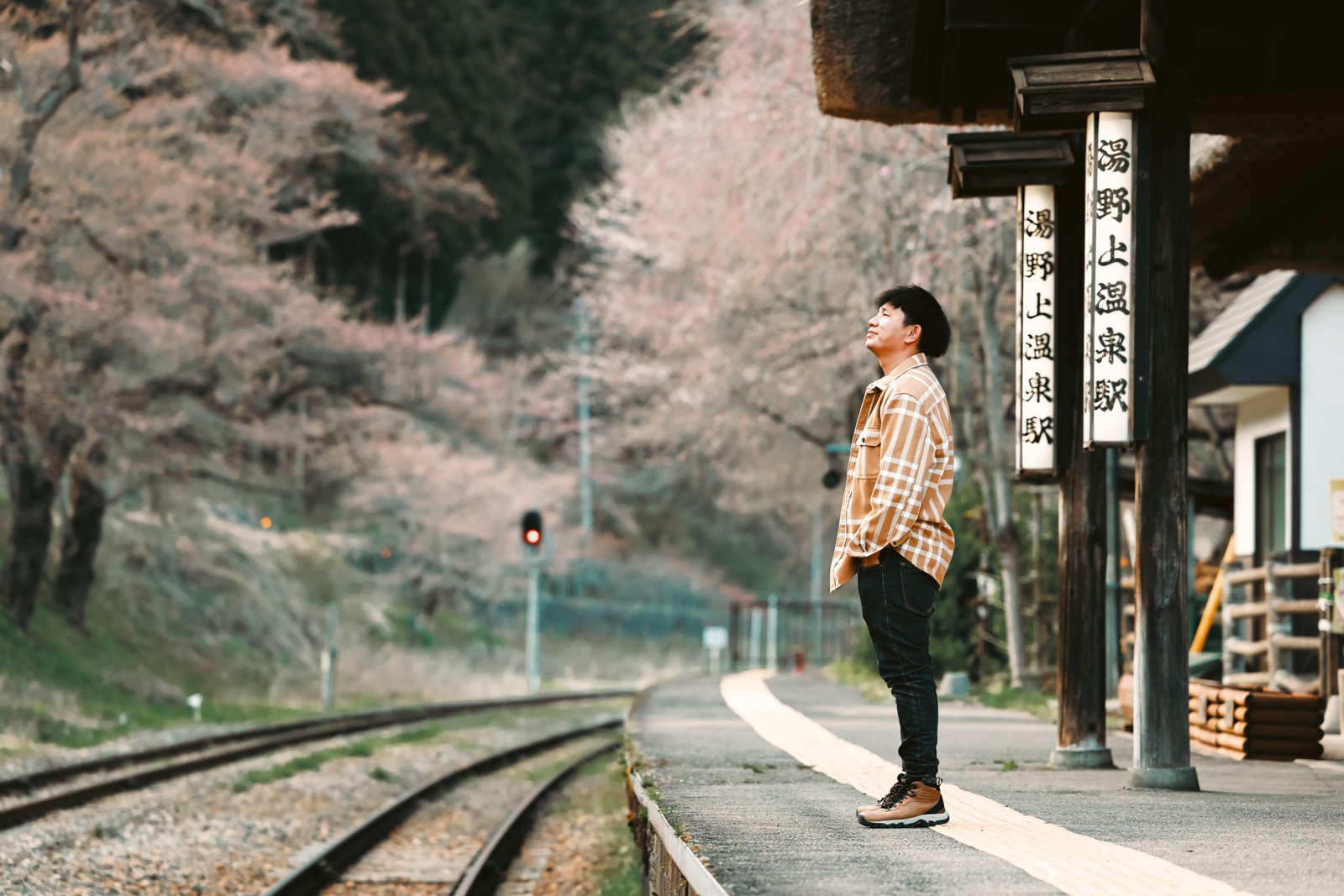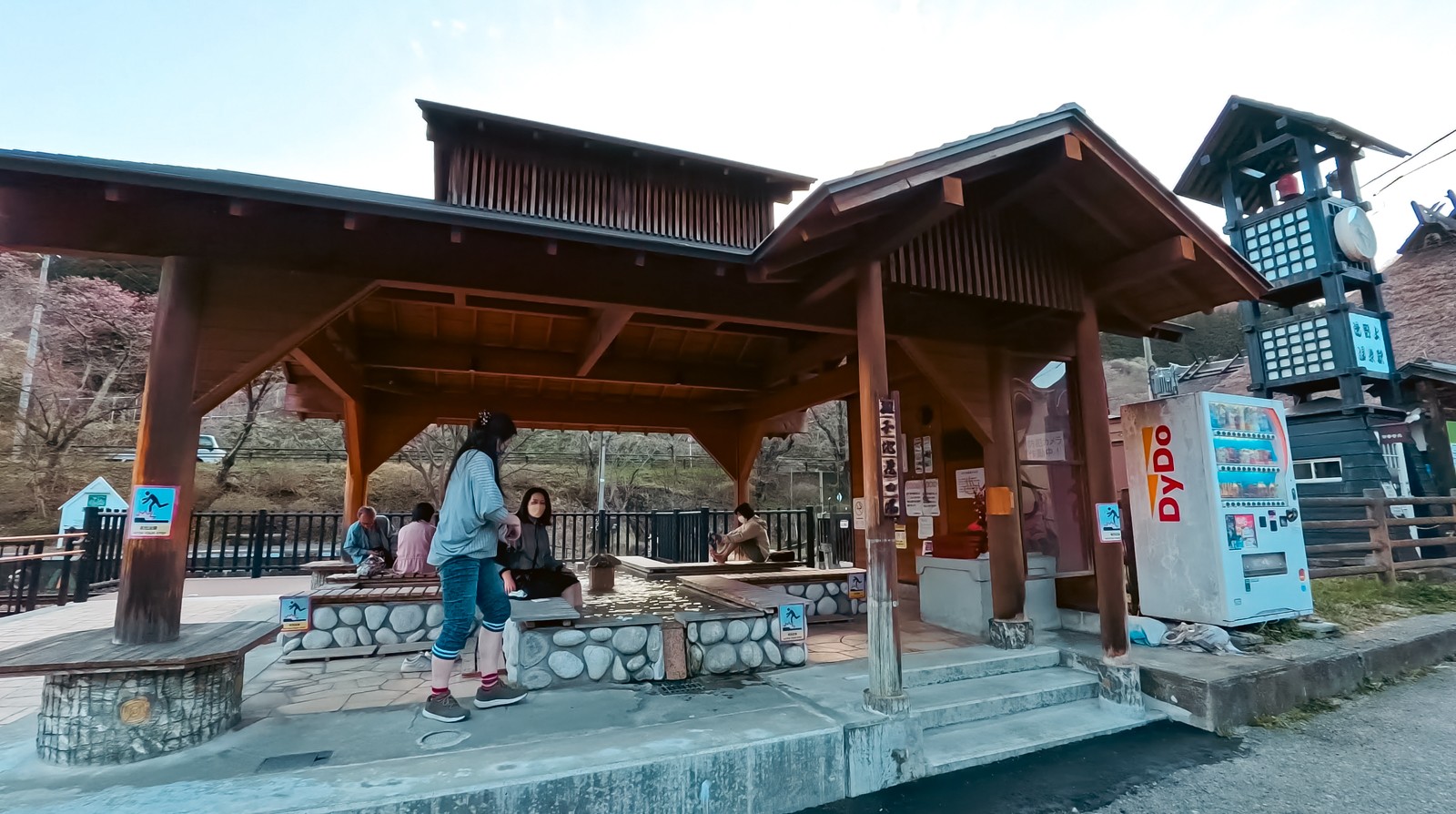The Yunokami-Onsen Station along the Aizu Railway in Fukushima Prefecture, Japan, offers a unique and captivating experience for travelers. This 22.7-km-long railway line, constructed by the Aizu Railway Company in 1932, boasts a station with a traditional Japanese architectural style, complete with curved roofs thatched with straw and large windows that let in natural light.

Photographer Lê Viết Vinh captures the beauty of the station, especially during spring when approximately 30 cherry blossom trees surround it, and in autumn, when the nearby mountains display a colorful array of foliage. The station’s architecture, with its soft lines and natural lighting, makes it one of the most popular check-in spots in Fukushima.

What sets Yunokami-Onsen Station apart is the opportunity it offers travelers to soak their feet in hot spring water while waiting for their train. This tradition of soaking in natural hot springs, or ‘onsen,’ dates back to the Edo period in Japan, and the station was built in the 20th century to cater to this popular relaxation activity.

Vinh was particularly impressed by this experience during his recent visit to Japan: “Soaking my feet in the natural hot spring water, watching cherry blossom petals dance in the wind, and sipping hot tea made the wait for the train incredibly relaxing. The thatched roof added to the station’s ancient charm, making it truly unique in all of Japan.”

The station is located in the ancient town of Ouchijuku, which gained fame during the Edo period (1603-1868) as a resort town along the Aizu West Road. Ouchijuku has meticulously preserved its historical appearance, including the absence of overhead power lines, as the town has opted to bury electrical wires underground.

The town is situated along the Aizu West Road trade route, connecting the cities of Aizu Wakamatsu in western Fukushima and Imaichi in Tochigi Prefecture. A 35-minute train ride from the central Aizu Wakamatsu Station will bring you to Yunokami-Onsen Station, with a ticket costing around 1,030 yen (approximately 170,000 Vietnamese dong).

Vinh’s photographs showcase the vibrant flowers that line the railway, creating a picturesque and serene atmosphere.



The railway in Ouchijuku evokes scenes from popular Japanese manga, making it a must-visit destination for those seeking an immersive experience in traditional Japanese culture and natural beauty.
Japanese Cherry Blossom: Symbolism, Beauty, and How to Cultivate These Delicate Flowers at Home.
Cherry blossoms are an iconic symbol of Japan, and their beauty and allure have captivated people worldwide. Unraveling the allure of these delicate flowers, we will embark on a journey to discover their profound significance, cultural importance, and the art of cultivating and caring for these exquisite trees in your own backyard.
Where to Buy Fake Cherry Blossom Trees for Tết Holiday in Ho Chi Minh City?
As the Lunar New Year approaches, the vibrant energy of the season takes over. Homes are adorned with festive decorations, and the streets come alive with the excitement of the spring festival. If you’re looking to add a touch of elegance to your celebrations with a stunning cherry blossom tree, then this article is for you. Get ready to explore the best places to find artificial cherry blossom trees in Ho Chi Minh City and bring the beauty of spring into your home this Tet.













